


FIVE-YEAR REPORT








FIVE-YEAR REPORT




When Mission: Iconic Reefs launched in 2019 it was only an idea—nothing more than words on paper. There was no staff, other than the goodwill of partners and NOAA employees working “other duties as assigned,” yet today, we are 20 strong as a team with over $35 million raised from various sources to implement the plan. Most importantly, practitioners are outplanting corals on the reef in Florida Keys National Marine Sanctuary, research is underway alongside restoration, and terabytes of data are being collected and analyzed. Given the typically-slow wheels of government, our five-year pace has been nothing short of astonishing. Even the need for my new role as senior manager is evidence of how far we have come.
Of course, the journey has not been without challenges. Unprecedented heat and more powerful storms have given us pause, but despite setbacks, we are buoyed by perseverance, dedication and passion from our team and partners. Despair may rise among marine advocates in other circles, but I do not sense hopelessness in this community. We get back up and keep going, unwilling to give up.
As the table of contents illustrates, this document outlines where Mission: Iconic Reefs has been, where we are, and where the program is headed. Transparency is critical. We are stewards of resources on behalf of taxpayers and investors who have been promised something bold, and we accept the mission.
Respectfully,

Jennifer Moore Senior Manager

“WE CANNOT AFFORD NOT TO ACT,” SHE SAID, USING THE DOUBLE NEGATIVE FOR EMPHASIS. “WE MUST TAKE ACTION TO REVERSE COURSE.”
— SARAH FANGMAN

A panel discussion about Mission: Iconic Reefs followed the program’s introduction on that December Monday in 2019.
The announcement was scheduled for a Monday, and at precisely 10:32 a.m., Florida Keys National Marine Sanctuary Superintendent Sarah Fangman stepped to the podium to make a proclamation of hope: Mission: Iconic Reefs, an unprecedented restoration effort to recover seven iconic reefs in the Florida Keys, has launched as one of the largest investments ever undertaken in coral restoration.
“We cannot afford not to act,” she said, using the double negative for emphasis. “We must take action to reverse course. These systems are in a state that without our active help they can not recover fast enough. That is why it’s time for bold strategies. Recognizing the impacts will still be taking place while we continue to have stressors like heat and storms. These challenges will not go away, but we cannot wait for them to go away. We must act to take these restoration steps and execute this strategy in the context of those threats, using resilient and resistant corals.”
the beginning
Groundwork for the announcement began six years earlier, when the Florida Keys National Marine Sanctuary Advisory Council formed a Coral Reef Ecosystem Restoration Working Group focused on identifying where coral restoration could be prioritized, while also considering various regulatory and permitting impediments to restoration. The working group iden-
tified 37 reefs as high-priority for restoration actions and included the recommendations in a revision of the sanctuary’s management plan.
Historically, the National Marine Sanctuary System had not undertaken restoration at the ecosystem level, but NOAA, with the guidance of its partners, came to realize that an ambitious effort at scale was needed.
A detailed review of criteria further refined the list of 37 sites to the seven. Most crucially, these sites have either a history of restoration success, or have characteristics that suggest restoration is likely to succeed. The sites are all “iconic”, and have a strong place-based affinity within the community.
With an experienced group of partners ready to join the mission, architects of the program established their bold purpose: restore ecological function to these seven sites over a 20-year period, putting Florida’s reefs on track for recovery, and demonstrating how restoration can support a vibrant, sustainable, local economy.
Coral reefs serve as critical ecological hubs in the ocean, providing food and shelter for a vast array of marine life, acting as vital nursery grounds for young fish, and protecting coastlines from erosion and storm surges by acting as a natural barrier against waves, essentially functioning as the “rainforests of the sea” due to their high biodiversity.
The sites span the full geographic range of the region, including all types of reef habitats, and a diversity of human uses. This decision was critical to spread the risk from potential storm and other impacts, but to also spread the benefits of restoration within the ecosystem and the local economy.
Com·pre·hen·sive /ˌkämprəˈhensiv/ adjective
1. complete; including all or nearly all elements or aspects of something.
If a single word could summarize the M:IR model, “comprehensive” is the operating adjective we would choose. Designed as a holistic solution to a dynamic challenge, M:IR incorporates a research project inside of a restoration program. It is a process that leverages established knowledge while generating new knowledge, anchored by a management principle that confronts climate change with programmatic change. Beginning with the corals themselves, M:IR is designed to produce quantifiable and scientifically sound assessments that inform meaningful adaptive management. With additional focus on creating and sustaining the ideal benthic community, M:IR becomes one of the most far-reaching coral restoration efforts in the world.










Site Preparation
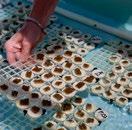


20
500,000 YEARS

5,000,000


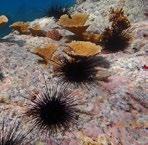
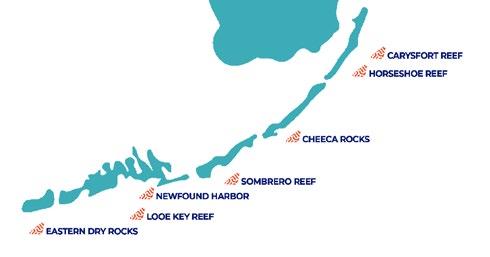
Coral Propagation, Rearing and Planting



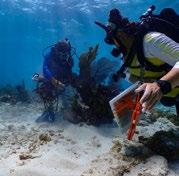
Thousands of Algae-Eating Grazers Stewardship and Maintenance


Monitoring and Adaptive Management

Goal: Self-Sustaining

As leader of Mission: Iconic Reefs, NOAA is tasked with managing, implementing, monitoring and communicating the program’s progress. The first step to rebuilding the reef began by building the team required to achieve the task, with a roster that today numbers more than 20 marine science professionals.
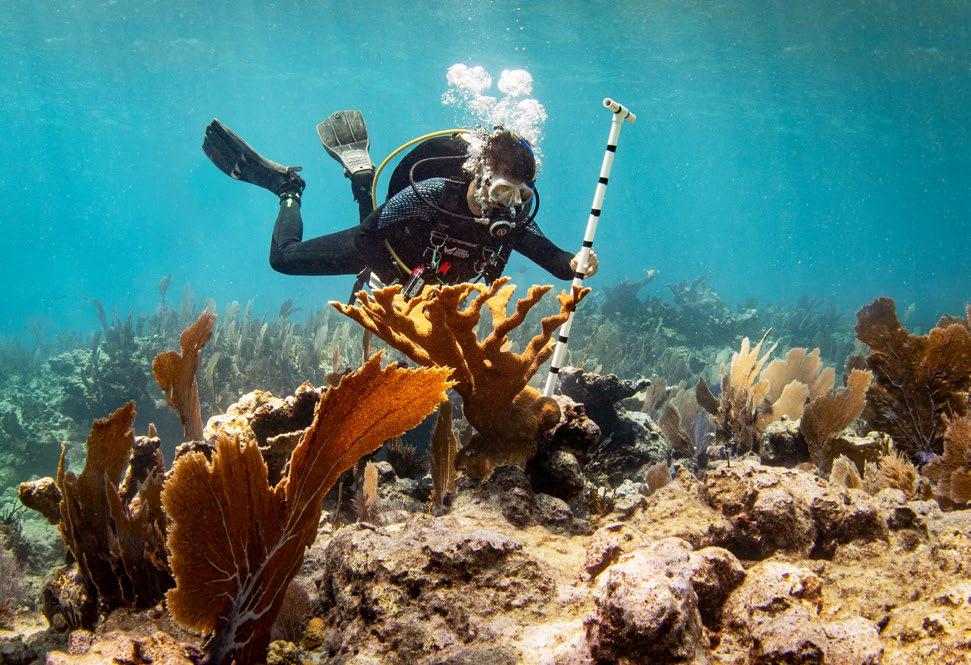





While led by NOAA,
is powered by a network of partners who specialize in a variety of disciplines critical to coral

From propagating and outplanting corals, to research, data management and stewardship, the partner team stands alongside the NOAA team, creating a formidable force in the battle for coral restoration.
The partner list includes:
• Association of Zoos and Aquariums
• NOAA AMOL
• Blue Star Diving Operators
• Boy Scouts of America Florida Sea Base
• College of the Florida Keys
• Conch Republic Divers
• Coral Restoration Foundation
• Duke University, Fish and Wildlife Foundation of Florida
• Florida Department of Environmental Protection
• Florida Fish and Wildlife Conservation Commission
• Florida International University
• Florida Keys National Marine Sanctuary Advisory Council
• Florida Keys Dive Center
• Island Ventures
• Jay Clue Photography
• Keys Marine Laboratory
• Marine Preservation Society of the Florida Keys
• Mote Marine Laboratory
• National Marine Sanctuary Foundation
• National Fish and Wildlife Foundation
• NOAA Coral Reef Conservation Program
• NOAA Coral Reef Watch
• NOAA Fisheries Southeast Regional Office
• NOAA National Centers for Coastal and Ocean Science
• NOAA Office of National Marine Sanctuaries
• Pirates Cove Watersports
• Quiescence Diving Services
• Rainbow Reef Dive Center
• Reef Renewal USA
• Scripps Institute of Oceanography
• SEFAN
• Skidmore College
• Shedd Aquarium
• Sustainable Oceans and Reefs
• The Florida Aquarium
• The Reef Institute
• The Smithsonian Institute
• The United Way of Collier and the Florida Keys
• The Embassy of the United Arab Emirates
• Tourism Development Council of the Florida Keys
• U.S. Geological Survey
• University of Florida
• University of Miami
• West Virginia University




As Mission: Iconic Reefs is a multi-decade program, frequent and high-quality monitoring efforts are essential for evaluating progress and outcomes.

A robust monitoring curriculum has been designed to produce quantifiable and scientifically sound assessments that inform meaningful adaptive management actions, especially in light of current and expected climate change impact scenarios, and regional stressors such as disease.
These monitoring efforts are extensive, interconnected, and comparable with existing monitoring programs in Florida Keys National Marine Sanctuary. Using multiple methods for data collection and metrics within sample designs intended to be quantitative and statistically robust, evaluation approaches include assessment of reef ecosystems, reef structural complexity, communities, populations, and individual organisms. These evaluation approaches involve standardized methodologies to quantify coral, fish, and invertebrate communities. Additionally, environmental data is continuously collected across the iconic reefs via a variety of sensors, which in conjunction with research partner monitoring efforts, will allow M:IR to track the impacts of climate change over time and understand the unique conditions present at each site.
The M:IR field team monitors activities at 135, 10x10 meter plots in specific habitats across all seven sites, including the acquisition of reef-scale imagery to serve as baselines for future comparison.
Using digital photography, cloud computing, and artificial intelligence (AI), Mission: Iconic Reefs managers can understand how the reef evolves as hundreds of thousands of corals are outplanted. Since December of 2021, the M:IR field team has captured over onehalf million individual images. Colleagues at the Na-
tional Centers for Coastal Ocean Science (NCCOS) use software that references targets on the seafloor along with site depth information to stitch together the photos and create 3D models of the reef (orthomosaics), which are also geolocated to the exact position of each plot. Resulting images are then analyzed with AI-assisted programs to measure changes to corals, the seafloor, and the reef structure and benthic community composition from year to year down to the centimeter scale, at the same exact location.

As water quality can strongly influence the health of all reef biological communities, a number of important metrics are being consistently measured to understand the current state of the iconic reef sites, and changes over time. Since 2023, Mote Marine Laboratory, with funding from the Environmental Protection Agency, has collected water samples at lower Keys reef sites. Via monthly collections, the researchers examine a number of nutrient indicators and carbonate chemistry parameters (to examine pH and the effects of ocean acidification) that together provide a seasonal and site specific water quality profile. Opportunistic monitoring following storms will also contribute to knowledge of how individual sites may be adversely affected by such episodic events. Starting in late 2024, sample collection will begin at upper Keys sites to create a complementary dataset across all M:IR sites. NOAA’s Atlantic Oceanographic and Meteorological Laboratory (AOML) has for years conducted monitoring at Cheeca Rocks via orthomosaics and periodic water carbonate chemistry sample collections, as well as via the deployment of a MAPCO2TM buoy (Moored Autonomous pCO2 system) in 2011, all together to examine in real time the effects of ocean acidification.
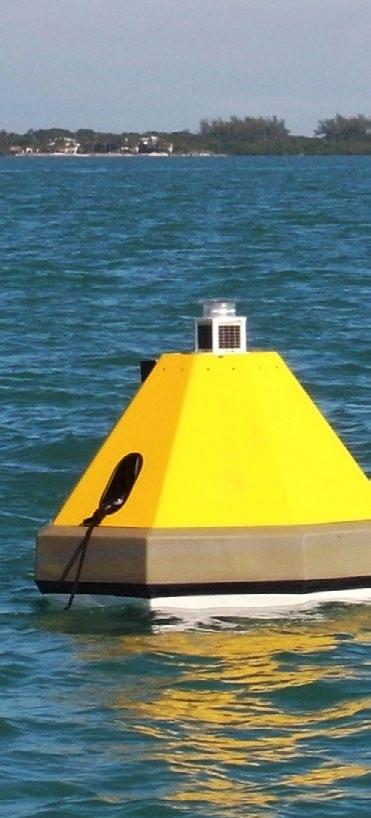

With the 2024 deployment of Sofar Spotter buoys that feature additional sensors, the team now receives real-time data of sea bottom pH. More than twenty Spotter buoys will be deployed throughout Florida Keys National Marine Sanctuary at M:IR sites and in restoration practitioner coral nurseries. The data are publicly accessible through the Aqualink platform, and provide at a minimum surface and bottom temperature values as well as general conditions including wind speed and wave height. Updated hourly, the buoy data aides in real-time operations decisions, especially during marine heatwaves when outplanting efforts may need to temporarily cease.
Together, the wide variety of water quality data collected is incorporated into analyses to understand the effectiveness of restoration sites, and used in the adaptive management decision framework.


To create a targeted strategy for each reef location, habitat-specific zones were identified at each reef site, with restoration targets and coral outplants tailored to each reef zone.

Two-percent. That was the baseline of coral cover that existed when M:IR launched in 2019. Over time, 2% will grow to 15% and, ultimately, 25%, restoring these Florida Keys reefs to a self-sustaining ecosystem.
The restoration plan incorporates a phased implementation approach over 20 years across the seven reefs, estimating how many adult corals are needed to achieve ecological restoration of the selected species at the seven reef sites.
M:IR will need 5,000,000 coral fragments to build the 500,000 coral colonies needed to achieve 25% coral cover.
Planting coral fragments onto the reef, also known as outplanting, is the domain of partners like Coral Restoration Foundation, Mote Marine Laboratory and Reef Renewal. These organizations, along with Boy Scouts of America, The Reef Institute and The Florida Aquarium, also propagate corals in their ocean and/or land-based facilities. While it will take many years to rear the millions of corals needed for M:IR to achieve its goal, these partner organizations were poised with enough genetic stock to lay the groundwork for
Phase 1a, which extends to year seven of the program. Almost 40,000 mature corals have been outplanted on the iconic reefs over the first five years.
Not every coral fragment or coral survives. The primary goal of M:IR is to increase the percent cover of live coral on the reef. While the specific targets vary by species and habitat type, the average target is 25% cover of live coral. M:IR has estimated how many mature living corals would be needed to reach this goal based on an average size for each coral and an average survival rate. It may take more or less corals overall to reach this target as environmental events (marine heating, hurricanes, disease outbreak) can dramatically affect the number of coral outplants that survive and impact their growth rates. As more corals are outplanted, the M:IR Field Team conducts monitoring to track the percent cover of coral at the sites. As more data is collected, adjustments can be made to the M:IR estimated number of corals needed to achieve the target percent cover.
A: A coral outplant is a collection of several coral fragments of the same species and genotype that are outplanted to the reef in a cluster. The number and size of fragments vary by species and method. The cluster of fragments will fuse together to form one coral that will continue to grow to reproductive maturity. One “M:IR coral” is a cluster of coral fragments that have fused together to make one coral of a certain size diameter. This diameter can vary by species, but is usually between 0.15m and 0.25m. Based on the preferred spacing of fragments from one another in the cluster, M:IR estimates that the fragments should fuse into one coral within a year of outplanting.
Ecological restoration is the process of helping ecosystems recover from damage, degradation, or destruction. It’s different from conservation, which focuses on preventing further damage to ecosystems.
Herbivores like the long-spined sea urchin eat algae, but their numbers on the reef have dwindled to such an extent as to render their usefulness negligible to the ecosystem. M:IR’s holistic approach reintroduces hundreds of thousands of Diadema, and will also introduce in greater numbers the Caribbean king crab, another effective algae consumer.
Research partners at the University of Florida and Sustainable Oceans and Reefs are aqua-culturing long-spined sea urchins. Once abundant on Florida’s reefs until the population was impacted by disease in the early 1980s, these urchins eat algae in open spaces on the reef where corals can settle. Since their die-off, there has been a significant shift from a coral-based reef to an algae-dominated one, but help is on the way.
Additionally, M:IR partner Mote Marine Laboratory created the first ever landbased Caribbean king crab hatchery at its aquaculture research park in Sarasora that will allow for the production of this native herbivore for restocking on the reef near coral outplants. The crustaceans have a large appetite, consuming algae that competes with corals and slowing their ability to reproduce. The four-year project, funded in part by NOAA and hatched in 2023, represents a science-based and scalable pathway to transformative and functional restoration.



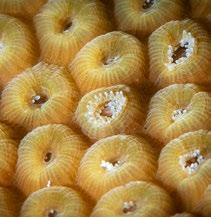
It’s only a failure, if you fail to learn from it.

Mission: Iconic Reefs is designed with a strong foundational framework of adaptive management - defined by the Reef Resilience Network as a “systems-based, proactive, flexible, iterative and responsive, and participatory application of a decision-making strategy.” Through frequent monitoring and evaluation of program status, goals, and even outplant performance, M:IR managers, scientists, and reef restoration partner practitioners will be able to adjust plans over time, especially under changing climate conditions.
An example of targeted data collection and subsequent application of adaptive management was showcased during and following the summer marine heatwave that caused widespread severe bleaching throughout the Florida Keys. In August 2023, the M:IR field team rapidly mobilized to assess the impact on outplanted elkhorn and staghorn coral at M:IR reef sites. These fast-growing acroporid corals are the primary species of the program’s Phase 1a strategy to jump-start regeneration of the reef. But surveys of over 800 elkhorn and 2800 staghorn outplants revealed that 30% and 22% of each species respectively succumbed to mortality, most likely due to heat stress.
Sites with remaining living outplants were re-surveyed in February 2024, with over 95% of the approximately 1,000 surveyed elkhorn outplants and 78% of staghorn outplants found to be dead following the bleaching event. However, the survey team anecdotally noted that both during and after the heat stress event, boulder, brain, and massive coral outplants showed signs of bleaching resistance, or resilience as they were healthy in February 2024.

AUGUST 11, 2023.

FEBRUARY 01, 2024.

As restoration practitioners also noted high amounts of branching coral mortality and overall better performance of boulder, brain, and massive corals, following an in-person workshop and numerous meetings, the collective decision was made to move to focusing more on this group of species, which are the focal species of Phase 1b. While this phase will be implemented at an earlier time than originally planned, efforts will now be directed to rebuild branching coral stocks, with a focus on identifying and breeding genets with favorable traits such as heat tolerance that can be incorporated into future outplanting plans.
Adaptive management decisions such as the earlier shift to Phase 1b focal species efforts are further strengthened through considering outcomes of targeted research efforts, which are derived from monitoring data collected by the field team, as well as myriad projects that collaborators are also already undertaking.


Mission: Iconic Reefs is pushing the envelope boundary of coral restoration, posing questions and developing protocols that will lead to answers.

As a research project built within a restoration program, Mission: Iconic Reefs is pushing the envelope boundary of coral restoration, posing questions and developing protocols that will lead to answers. This thread of academic inquisitiveness passes through every discipline of the program, binding new knowledge with established knowledge, on a path toward the future.
Wave Energy Monitoring at Eastern Dry Rocks
Coral reefs provide significant protection from flooding and erosion to coastal ecosystems and communities, especially during storms. These natural barriers dissipate wave energy, thus reducing wave size near shore. Since mid 2021, collaborators at Duke University have periodically been downloading data from acoustic doppler current profilers (ADCPs) deployed across Eastern Dry Rocks, the southernmost Mission: Iconic Reef site. The importance of the reef structure was quantified following Hurricane Ian, as instrument data revealed that 95% of wave energy was dissipated over a kilometer of distance of reef. The researchers are continuing to collect and analyze recordings at regular intervals, and by including coral restoration data such as species, size, and location on the reef, they will be able to create models that estimate how reef restoration efforts contribute to wave energy dissipation.

1. How does the overall population structure of targeted coral species change following restoration activities?
2. How does specific selection of genets for restoration efforts affect success, while balancing the need for high genetic diversity?
3. How does restoration affect reef fish recruitment and reef fish productivity?
4. How does restoration of corals and invertebrate herbivores alter benthic community composition?
5. How do site preparation and site maintenance (“coral gardening”) activities alter benthic community composition?
6. How do “coral gardening” activities affect the success of restored corals?
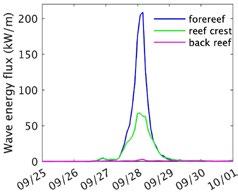
Environmental DNA Across Mission: Iconic Reef Sites
Environmental DNA (eDNA) is genetic material obtained from environmental samples, which can reveal the identity of organisms that live or have passed through the area where the same is obtained. Use of this technique is particularly useful in characterizing the presence of cryptic or rare species, and overall can provide a more complete picture of species richness that is not captured by visual or video surveys. In 2024, researchers at AOML began water sampling at all Mission: Iconic Reef sites, which will provide a baseline of biodiversity metrics for future comparisons. These data will allow for investigation into how species diversity changes alongside coral restoration in comparison to control areas, beyond macrofauna (e.g., fish and invertebrates) observable via diver surveys.

The effort to put Florida Keys coral reefs on track for recovery requires long-term collaboration between many partners.
Iconic Reef Guardians provides an opportunity for the diving and snorkeling public to lend a hand.
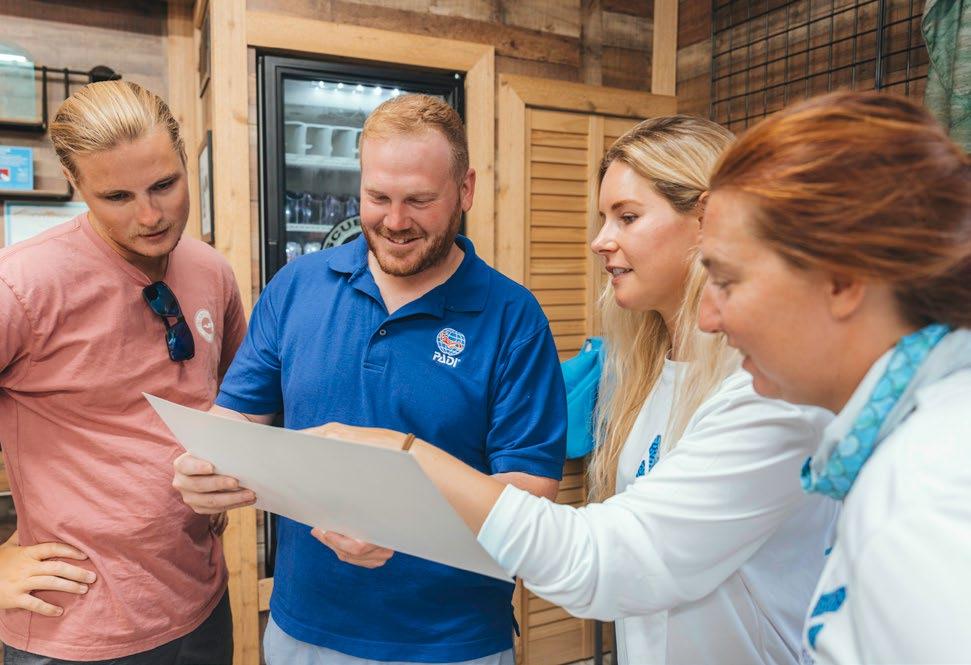
Powered by professional dive shops that recognize the symbiotic connection between protection and recreation, pilot programs and working groups are quickly graduating to community diver opportunities.
Harnessing the power of the professional and recreational dive community, Iconic Reef Guardians works with Blue Star Diving Operators to educate and empower scuba divers and snorkelers to become stewards of our iconic reef sites.
Along with a virtual coral reef and restoration training element through the online learning platform hosted by National Marine Sanctuary Foundation, four unique experiences provide opportunities to witness firsthand the sensitivity and resilience of the coral reef ecosystem and contribute to restoration success. Thanks to Coral Restoration Foundation (CRF), Mote Marine Laboratory, and Reef Renewal USA, these in-water experiences are available at different locations throughout the Keys, including:
Passive coral nursery experience (available currently)
Jump into the turquoise blue waters of Florida Keys National Marine Sanctuary and take a tour of some of the most innovative coral nurseries in the world.
Active coral nursery experience (in development)
Lend a helping hand in the care of nursery corals by completing hands-on maintenance that promotes a safe place for them to grow up.
Reef experience (in development)
Corals placed at Mission: Iconic Reef sites need support to grow and thrive. This experience helps provide regular care for corals as well as assessment reports to support long-term success.
Coral health experience (available currently - in pilot)
Dive into Coral Health Experience to help monitor coral bleaching, disease, and resilience and submit vital data to help our scientists assess the health of the reefs.

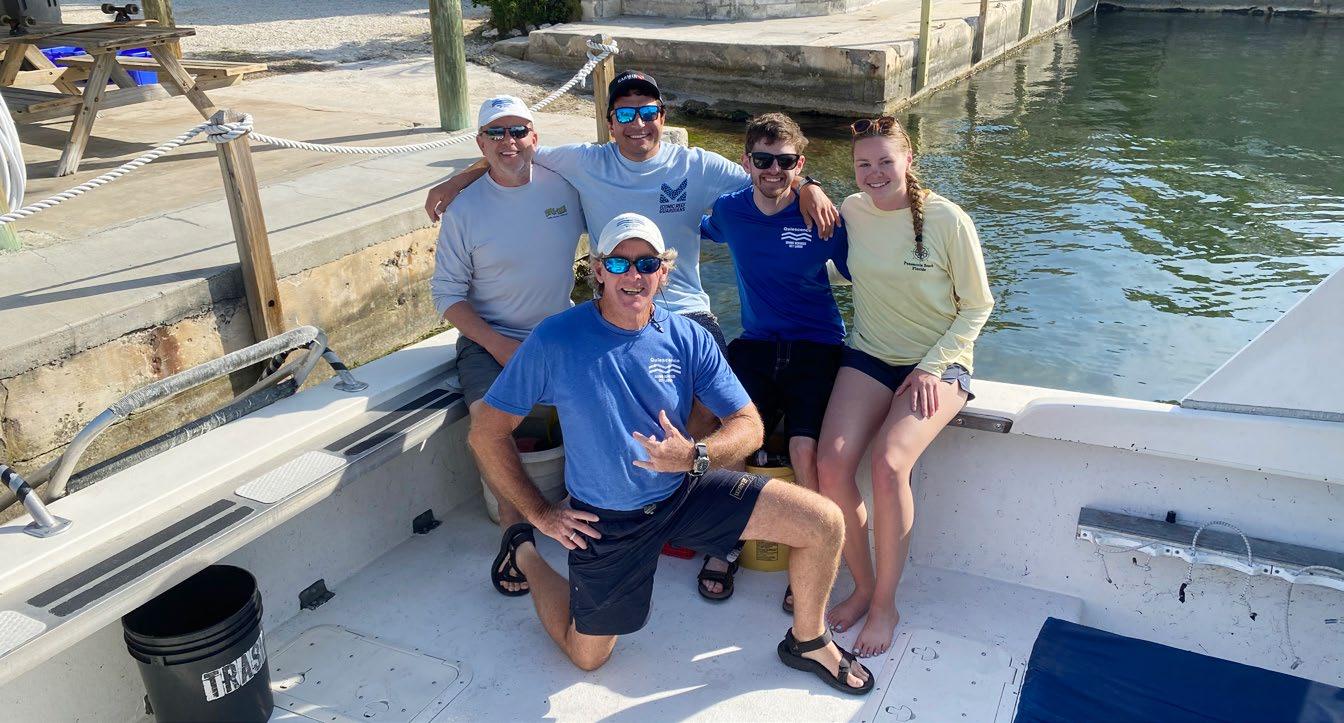
To date, the program has engaged 42 dive professionals through its comprehensive online training platform. These instructors are required to complete thorough training to prepare them for teaching conservationfocused experiences to recreational divers and snorkelers. To ensure the training is effective, Iconic Reef Guardians integrates surveys throughout the learning process to assess its impact. The charts below, created by the National Marine Sanctuary Foundation illustrate these results.
During the pilot phase of the experiences, recreational divers were asked to provide voluntary, anonymous feedback after participating in both the online learning and inwater activities. Common themes emerged from the feedback, with many participants identifying “humans” as a significant threat to coral reefs. They also frequently suggested that “educating others” and “being a conscious diver” were key ways to help overcome this challenge and support restoration efforts.
Many of the recreational divers and snorkelers involved in the Iconic Reef Guardians program have shared how much they enjoyed the restoration-focused experiences. One participant reflected, “It was fascinating to see how they grow and plant the coral. I only wish I lived closer so I could be part of it more often.”

Mission to Recover Iconic Coral Reefs in Florida Keys National Marine Sanctuary.
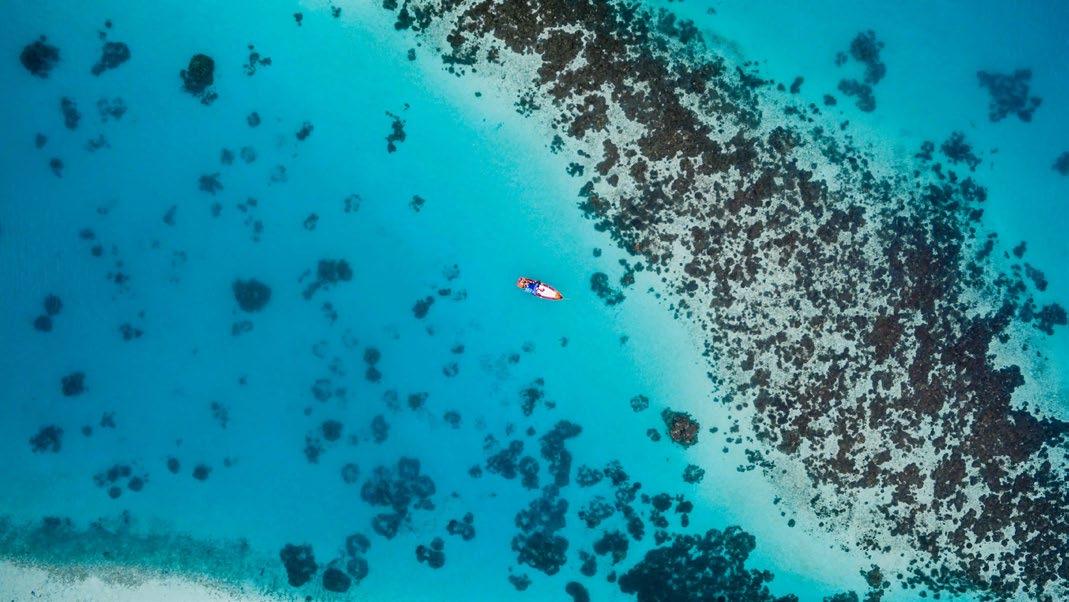
MISSION: ICONIC REEFS is a NOAA-led, partner-driven effort that aims to restore structure, function, and resiliency to nearly three million square feet of Floridaʼs Coral Reef over the next two decades. It is a fundamental change and proactive approach to NOAA coral reef conservation initiated in 2019 to combat the decline of the regionʼs ecosystem that brings critical services to the nation, generates billions of dollars for the economy, and provides tens of thousands of jobs annually.

If the tree falls in the forest and no one is there to hear it, well, you know the rest. External communications is an important element of M:IR. Just in time for the fiveyear anniversary of the program, a dedicated website has been launched to complement social media channels. We encourage you to visit them, looking for the debut of a documentary featuring the M:IR program.
During M:IR’s 2024 implementation meeting, in the wake of the 2023 heat event, leadership, partners and the M:IR team brainstormed ideas for how to communicate the program’s progress. Utilizing a SWOT analysis format, they collected ideas in buckets labeled strengths, weaknesses, opportunities and threats.
This graphic represents the distillation of those ideas, which reflect a hopeful outlook in the face of constantly changing conditions.
What’s going right? STRENGTHS
Adapting through innovation Collaboration among partners Preserving and leveraging genetic strains
Persistence despite setbacks
What is the biggest challenge? WEAKNESS
Human and climate impacts on ecosystem
Nuance of messaging optimistic truth
Capacity to scale up
Why are we optimistic? OPPORTUNITY
Talented team and unified effort
Innovative philosophy
Survivors inform future strategies
What don’t we know? THREATS
Impact of future events
Will stressors get under control?
Will our strategies succeed?
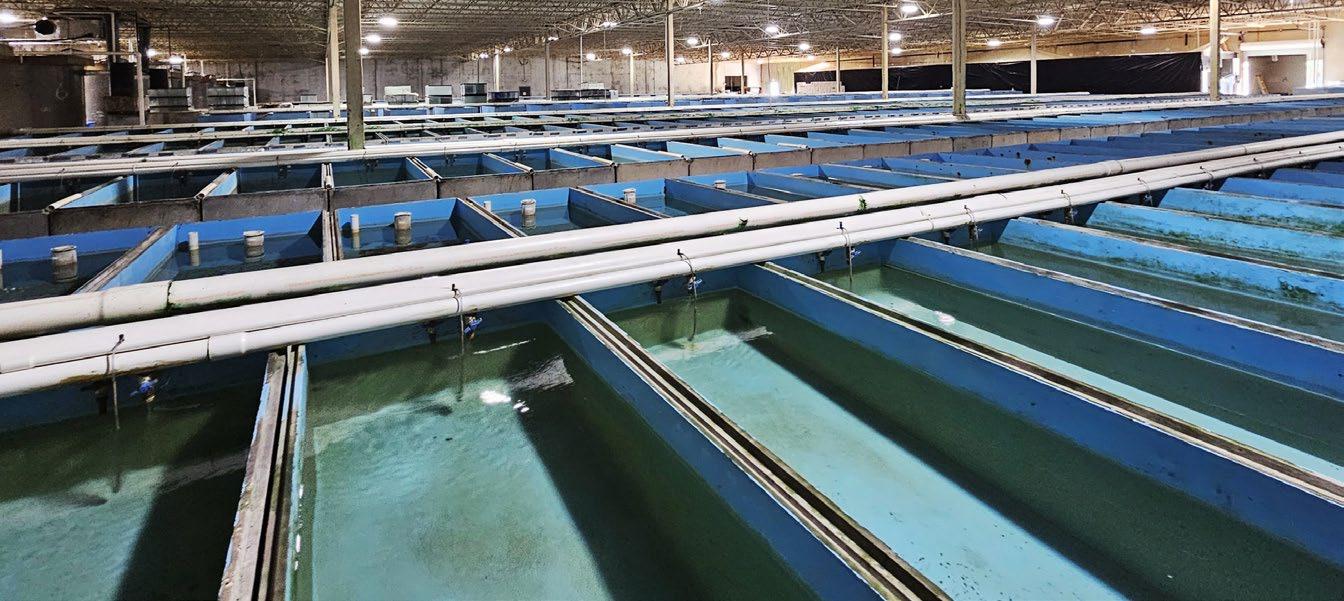

When the NOAA-led, partner-driven Mission: Iconic Reefs restoration effort was initiated in 2019 to combat the decline of the region’s coral reef ecosystem, multiple industry experts with decades of collective experience and research partnered to support the project.
The network includes world-renowned scientists, local restoration partners, federal and state agencies, business allies, friends’ groups, and volunteers who work across multiple disciplines utilizing the most recent, cutting-edge science and state-of-theart restoration techniques to facilitate and reinforce ecosystem recovery and resilience. Without the expertise and dedication of partners, successful largescale restoration would not be possible. To date, our restoration practitioners annually produce upwards of 100,000 corals for outplanting, and Reef Renewal USA has plans to triple that amount at a new landbased site in Ruskin, Florida.

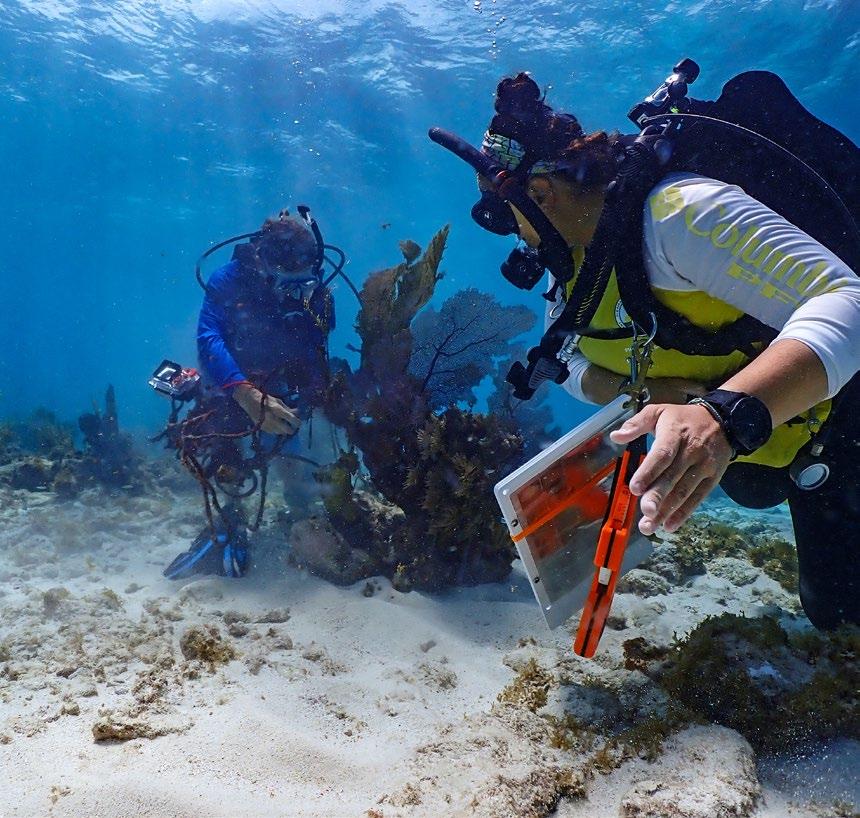
With the holistic approach to reef restoration that Mission: Iconic Reefs supports through practitioners, site preparation and site maintenance, two key components of coral gardening, will be further developed into robust programs. Site preparation involves readying each outplant site before corals are introduced, to ensure better initial success of the outplants. Marine debris, thick mats of fleshy or turf algae, and the strong spatial competitor Palythoa are removed.
A new vacuum-like device has been developed as part of research and development, testing ways in which Palythoa can be removed without dispersing fragments to other parts of the reef.
Following outplanting, site maintenance will continue to improve the outcome of restored corals, as marine debris, nuisance species, and coral predators are removed on a regular basis, and detached or damaged corals are also addressed. Some aspects of site preparation have been trialed at small scales, and cost-effective and overall efficient techniques are still being built out. With the expansion of the Mission: Iconic Reefs Guardians programs, volunteer divers and Blue Star Diving Operators will be able to greatly contribute to site maintenance efforts across the Keys.
Yellow-footed snails can eat more than one square centimeter of coral each day. They usually begin feasting at the base of a coral colony, eventually leaving the skeleton exposed. As another arrow in the quiver of holistic weapons aimed at reef restoration in the Florida Keys, M:IR is developing a protocol and program for removing this nuance species through Iconic Reef Guardians. On a recent mission to Carysfort and Elbow Reefs, partners organized by the National Marine Sanctuary Foundation removed more than 2,300 snails.
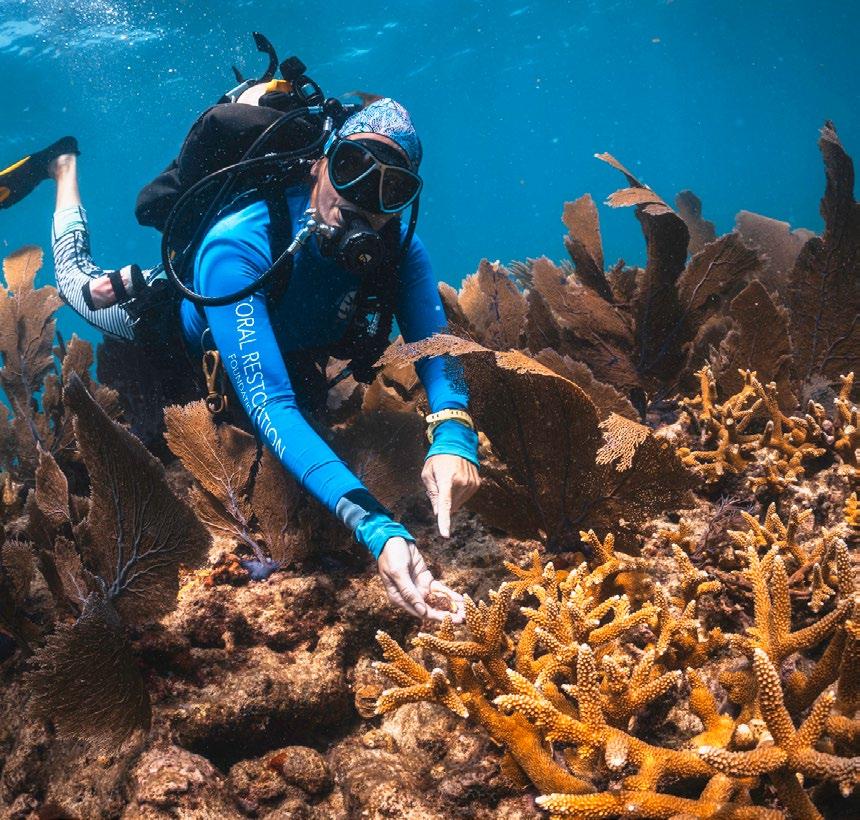
As the impacts of climate change are expected to continue for years to come, Mission: Iconic Reefs partners have been trialing interventions to improve survival of ocean-based nursery corals during bleaching events such as the one induced by the summer 2023 marine heatwave. Practitioners have trialed deployment of shading structures that reduce the amount of direct sunlight, which together with high sea temperatures contribute to coral bleaching.
Shade cloths can be attached to existing nursery trees, providing a cost-effective, quick, and relatively easy mechanism to reduce stress on corals. The Coral Restoration Foundation has also partnered with researchers at The Ohio State University to test light devices that can be attached to coral nursery trees, which are activated for an hour after sunset, and attract zooplankton that corals consume.
Through this supplementary heterotrophic feeding, bleached corals may be able to survive through a marine heat wave, especially if shade cloths are also used. These interventions and others will undergo additional development and trialing in the coming years and will be increasingly important as coral nursery efforts continue to expand.
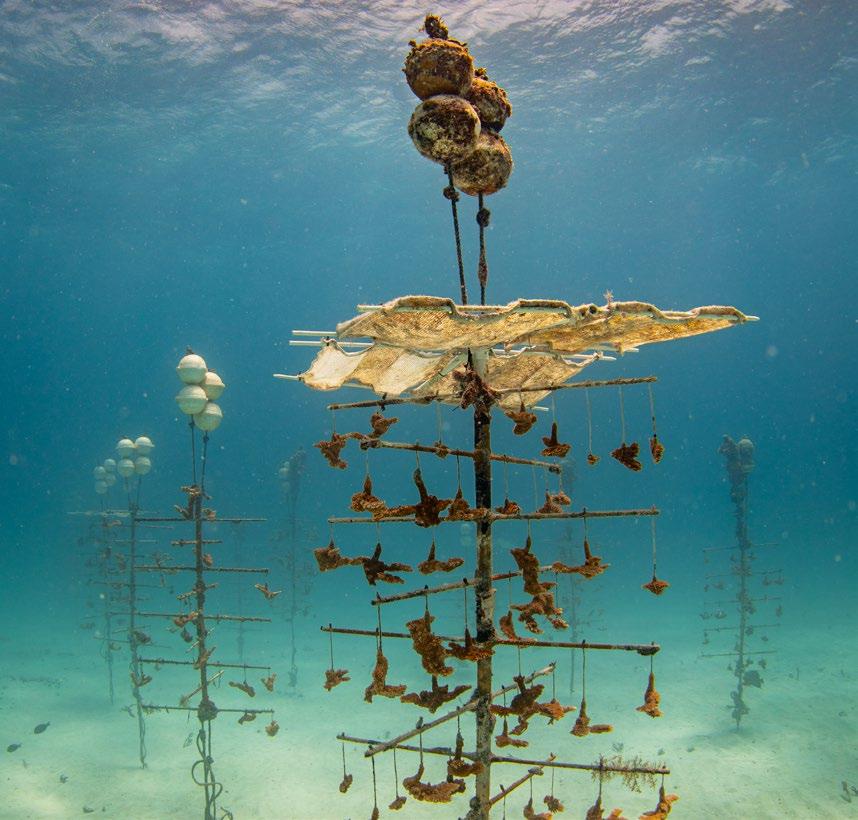
A partnership developed between NOAA, the United Way of Collier and the Keys (UWCK) and the United Arab Emirates (UAE) was forged in the wake of impacts from Hurricane Irma in 2017. NOAA was able to pivot the conversation to the potential of the Mission: Iconic Reefs concept, and the UAE announced a $3.5 million gift to UWCK to fund cutting-edge and innovative projects in reef restoration and education. The grant has funded coral practitioners, Ocean Guardian Schools, scholarships and community outreach elements.
Education is critical to the sustainability of this bold project investing in the future of the Florida Keys. Our goal is that educating children to engage in stewardship and conservation from a young age will change habits and behaviors resulting in long-term success for the community and the inter-dependent ocean environment. UWCK has committed $180,000 over 5 years to support these efforts.

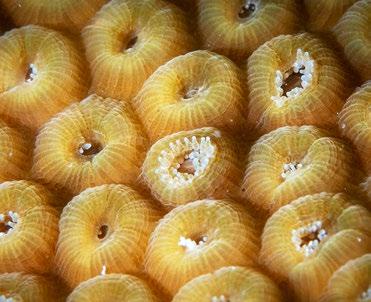
Areas of investment and sources of funding
• Healthy marine ecosystems are invaluable to the Blue Economy. Florida’s Coral Reef is the only bank barrier coral reef in the continental United States, the majority of which lies in the Florida Keys. More than 5 million visitors come here each year, generating $4.7 billion in spending. Investing in the Florida Keys reef system has a multiplying effect on the local and national economy.
• Mission: Iconic Reefs has become a magnet for federal funding and other resources. The attraction includes a comprehensive plan with tangible goals that funders can circle around, and partly because of the pre-existing and growing network of partners who are collaborating to execute and advance the work.
• There are several opportunities for investment at different scales within the M:IR framework: Implementation (coral propagation and outplanting), Research & Development, Monitoring, Stewardship and more.
Jennifer Moore
Senior Manager
IMPLEMENTATION
Andy Bruckner, Ph.D.
Research Coordinator
Maddie Cholnoky
Implementation Manager
Michelle Loewe
Marine Habitat Resource Specialist and Coral Restoration Consortium Coordinator
Lisa Symons
FKNMS Regional Response Coordinator
PROGRAM EVALUATION
Katey Lesneski, Ph.D.
Research and Monitoring Coordinator
Ananda Ellis
Marine Operations Supervisor
James Emm
Marine Operations Specialist
Sydney Gallagher
Marine Operations Specialist
Shane Gallager
Marine Operations Specialist
Andrew Ibarra
Marine Operations Specialist
Grace Hanson
Data Manager
Kai Lopez
Marine Operations Specialist
Ben Edmonds
Marine Operations Specialist
COMMUNICATIONS
Scott Atwell
FKNMS Communications Manager




